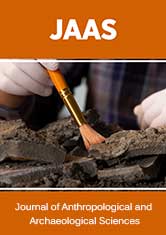Lupine Publishers | The Roots of Society-Destroying Tribalism
Lupine Publishers | Journal of Anthropological and Archaeological Sciences
Opinion
Self-serving “our way or the highway” Tribalism is a ruinous societal
malady that results in racial discrimination, xenophobia, religious
prejudice, gender discrimination and even the distrust some harbor for
arcane college professors and their so-called “hidden knowledge.” All know its destructive impact, in the U.S. sought to be offset by
voter rights legislation, Title IX strictures, public education and the
like. But is it enough to deal piecemeal with the results and ignore their
cause? Perhaps if we understood the roots of the sickness, we might
better remedy its symptoms. My notion is that Tribalism is innate in human beings, a genetically
determined trait of Homo sapiens. In a 2019 essay in the Washington Post
Sebastian Junger argued that political polarization is inbred. To me,
the impact of such underpinning seems far broader. Tribalism, like any trait shared by disparate societies worldwide having
differing cultures, traditions and histories cannot be solely
“cultural.” That, then, implicates genetics, a sensible idea given that
all humans, regardless of their heritage, are 99.9% genetically
identical. And the malady is exceedingly difficult to eradicate. There
are countless examples of differing peoples living side-by-side only to
be torn apart by a reprise of earlier Tribalistic conflicts – for
example, the “ethnic cleansing” that accompanied the 1990s dissolution
of Yugoslavia and today, in the U.S. and Europe, fear and rejection of
immigrants and the resurgence of White Supremacy.
That such conflicts arise repeatedly shows they are deep seated. The
cultures evolved but the underpinnings of the conflict subconsciously
festered. The gene-based thesis explains their resurgence time and
again.
Read more about this article: https://lupinepublishers.com/anthropological-and-archaeological-sciences/fulltext/the-roots-of-society-destroying-tribalism.ID.000111.php
Read more about Lupine Publishers Google Scholar Articles: https://scholar.google.com/citations?view_op=view_citation&hl=en&user=w-I2_wEAAAAJ&cstart=20&pagesize=80&citation_for_view=w-I2_wEAAAAJ:XiVPGOgt02cC

Comments
Post a Comment